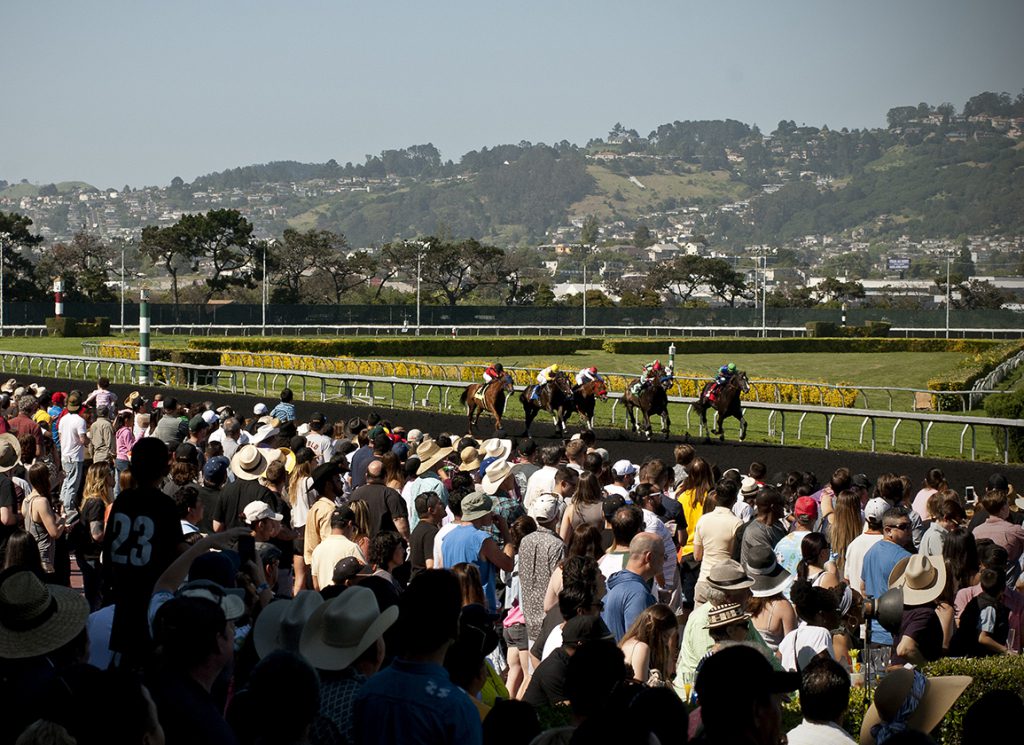If Golden Gate Fields is not licensed to operate beyond July 1 next year, proceeds from simulcast wagering in the north are funneled south when there is no racing in the northern half of the state, according to proposed legislation introduced in Sacramento.
The rule of thumb is that proceeds from wagers made in the “northern zone” stay in Northern California to pay for purses and operational expenses, while the proceeds from wagers made in the “southern zone” stay in Southern California for the same purposes.
According to California Authority of Racing Fairs (CARF) executive director, Larry Swartzlander, the legislation was drafted by CARF in agreement with The Stronach Group (TSG), on the proviso that Golden Gate Fields remains open for racing an extra six months.
TSG announced in July that it was closing the Bay Area facility at the end of December with the goal of increasing field size and adding another day of racing a week at Santa Anita.
“Our one concern from stakeholders was: Does The Stronach Group renege on us here, and doesn't extend [racing at Golden Gate Fields],” said Swartzlander, who said that CARF had tried to stipulate in the bill that Golden Gate fields remains open through June 2024.
“We wanted to put that in legislation–we wanted to–but we simply couldn't do it,” said Swartzlander, before adding that “everyone's pretty adamant that they will extend racing through June.”
TDN reached out to TSG Saturday morning with various questions, including whether the company indeed intended to extend racing an extra six months at Golden Gate Fields if the legislation is passed. TSG has not yet responded. The story will be updated accordingly.
“Consensus approval within the California racing industry to introduce this legislative amendment is a major step forward. It provides the flexibility to create a path for a new racing and business model leading into 2025 that is fair and balanced for all California owners,” wrote Thoroughbred Owners of California (TOC) president and CEO, Bill Nader, in a statement.
The proposed legislation states that, “notwithstanding any other law, if the board does not license a thoroughbred race meet to be conducted by a racing association at a racetrack located in the cities of Berkeley and Albany after July 1, 2024, a thoroughbred racing association, or racing fair, in the southern or central zone licensed by the board to conduct a thoroughbred race meet or fair meet shall, during racing weeks not allocated by the board for a race meet in the northern zone, be deemed to be operating in the northern zone for the purpose of conducting all permissible forms of wagering in the northern zone pursuant to this chapter and making and receiving required distributions from those wagers in accordance with this chapter.”
The language is a proposed amendment to AB 1074, co-authored by Assemblymember Miguel Santiago (D-Los Angeles) and state Senator Bill Dodd, (D-Napa).
At last month's CHRB meeting, TSG representatives had floated the idea of keeping the facility open until mid-2024 on condition that the current system of divvying up the simulcasting proceeds is revised to benefit the tracks in Southern California, where TSG is consolidating its operations.
Until now, various stakeholders in Northern California–including representatives of CARF–had voiced reservations about altering the system by which simulcast wagering proceeds are allocated.
For the purposes of simulcasting proceeds, the state is broken into three main geographical zones–the “Southern,” “Central” and “Northern” zones.
Largely speaking, the south and central zones are rolled into one big “southern zone,” roughly spanning the northern tip of San Luis Obispo County down to the Mexico border. The “northern zone” consists of the remaining counties in the state.
The monies generated from simulcasting wagering are used for a variety of operational expenses besides purses, including payments to the California Horse Racing Board (CHRB) and the Horseracing Integrity and Safety Authority (HISA), the backstretch retirement fund and workers' compensation.
Next year's racing calendar in Northern California is, of course, still to be decided. Swartzlander floated a plan that if Golden Gate Fields remains open until mid-2024, Santa Rosa would stage a Thoroughbred meet from mid-October–when the Fresno fair meet ends–until the end of the year.
The 2025 Northern California Thoroughbred racing calendar, Swartzlander added, could still hinge around a permanent base at Cal Expo. Such a plan would apparently require reaching an agreement with California's harness racing industry, which only last year extended its lease of operations of the Cal Expo Harness racetrack until May 2030.
Swartzlander also suggested the permanent bases of any extended 2025 Thoroughbred racing calendar in the north could be split between Cal Expo and Santa Rosa.
“Negotiations are continuing,” said Swartzlander. “We'll work with them [WatchandWager Cal Expo] to come up with a solution. Whether we end up with a 50-50 split between Cal Expo and Santa Rosa, or whether we end up relocating Harness to another track, there's several options.”
The California legislature goes into recess on Sept. 14. October 14 is the last day for California Governor Gavin Newsom to sign or veto bills passed by the legislature on or before Sept. 14.
The post Proposed Legislation Suggests Extra Six Months Of Racing at Golden Gate appeared first on TDN | Thoroughbred Daily News | Horse Racing News, Results and Video | Thoroughbred Breeding and Auctions.

